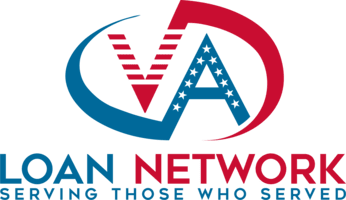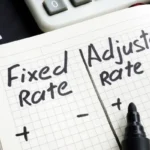Homebuying is a milestone, and veterans enjoy unique benefits through VA-backed financing. However, many are tempted by Adjustable Rate Mortgages (ARMs) due to lower introductory rates.
This introduction sets out why such loans are risky for veterans. From the risk of shooting sharply higher payments up to the specific challenge of readjusting to civilian life, ARMs bring uncertainty at a time of greatest need for stability.
Conversely, VA loans and other fixed-rate mortgages offer steady monthly payments and fewer surprises. Understanding these strengths and weaknesses educates veterans to make informed mortgage decisions based on their long-term objectives.
In this Article
What is a Veterans Adjustable Rate Mortgage (ARM)?
A Veterans Adjustable Rate Mortgage is similar to a traditional ARM: it starts with a fixed interest rate for a set period—often 3, 5, 7, or 10 years—and then shifts to a variable rate that can fluctuate based on market conditions. Although the low introductory rates can be tempting, the eventual rate adjustments may create long-term affordability issues. Veterans, who may face income changes or unique financial stressors, should be especially cautious about diving into these mortgages.
Why Are ARMs Risky for Veterans?
Many veterans wonder, “Is an ARM a good idea for veterans?” or “Should veterans get an ARM?” Here are key factors that highlight the dangers of ARM for veterans:
- Rate Volatility: After the initial fixed period, your interest rate can spike, increasing monthly payments substantially.
- Income Instability: Transitioning from the military to civilian jobs can lead to fluctuating income. A sudden rate hike can be disastrous if you’re in between stable roles.
- Complex Terms: ARMs involve indexes, margins, and caps that can confuse borrowers, increasing the risk of unexpected rate changes.
- Refinancing Hurdles: If your credit score or home value decreases, refinancing to a fixed-rate mortgage might be challenging or impossible.
For veterans seeking predictability and financial peace of mind, the disadvantages of ARM for veterans often outweigh the potential short-term savings.
Benefits of VA Loans Over ARMs
Before choosing an ARM, consider the advantages of a VA loan vs. ARM for veterans. VA Loans are specifically designed to accommodate veteran finances and often include the following benefits:
- No Down Payment: Qualified veterans can secure a home without an upfront down payment, preserving cash reserves.
- No Private Mortgage Insurance (PMI): You’ll save on monthly costs by skipping expensive PMI requirements.
- Competitive Fixed Rates: A fixed-rate VA loan offers stability, ensuring your monthly payment stays the same for the life of the loan.
- Assumable Loan: If you need to sell, an eligible buyer can assume your VA loan, potentially simplifying the selling process.
These features combine to offer veterans a safer alternative to ARM loans, minimizing risks tied to market fluctuations.
Real-World Example: When an ARM Goes Wrong
Take the case of a veteran, Mark, who took an ARM with a 5-year fixed period at a rate of 3%. He planned to refinance before the adjustment period. But personal problems forced him to switch careers, which reduced his income temporarily. By the time the 5-year period ended, interest rates in the whole market had increased significantly. His new adjustable rate increased to 5.5%, increasing his monthly payment by hundreds of dollars. Unable to refinance due to his lowered income, Mark was struggling to make payments. This is a case of how an ARM can become dangerous for veterans when life takes unexpected twists.
Alternatives to ARMs for Veterans
If you’re unsure whether a Veterans Adjustable Rate Mortgage (ARM) is the best fit, you’re not alone. While ARMs can offer a low introductory rate, they also come with long-term uncertainty that may not align with your financial goals—especially if you’re planning to stay in the home for many years or you’re on a fixed income. Fortunately, veterans have several safer and more predictable financing options:
| Loan Type | Best For | Down Payment | PMI / Insurance |
|---|---|---|---|
| Fixed-Rate VA Loan | Veterans wanting stable, long-term payments | 0% | No PMI |
| FHA Loan | Lower credit, limited savings | 3.5%+ | MIP required |
| USDA Loan | Rural/suburban buyers with modest income | 0% | Lower MIP |
| Conventional Loan | Strong credit, investment/rental options | 3%–20% | PMI if < 20% down |
1. Fixed-Rate VA Loan
A fixed-rate VA loan remains one of the most popular choices for veterans—and for good reason. It offers:
- Consistent monthly payments for the life of the loan.
- Low interest rates backed by the VA, often better than conventional rates.
- No private mortgage insurance (PMI), which helps lower your monthly costs.
- Ideal for veterans planning to own their home long-term or concerned about future rate hikes.
✅ Best for veterans seeking predictability and peace of mind over the life of the loan.
2. FHA Loan
While not exclusive to veterans, FHA loans are a viable alternative to a VA loan if you have:
- Lower credit scores or limited credit history.
- Small savings for a down payment (as little as 3.5% down).
- Flexible underwriting standards for borrowers who may not qualify for conventional or VA loans.
Note: FHA loans require both upfront and ongoing mortgage insurance premiums (MIP), which can increase your total cost compared to a VA loan.
✅ Best for veterans with weaker credit who don’t qualify for a VA loan.
3. USDA Loan
If you’re buying in a rural or qualifying suburban area, a USDA loan can be a strong alternative. Key benefits include:
- Zero down payment required.
- Fixed, low-interest rates subsidized by the USDA.
- Low mortgage insurance costs compared to FHA loans.
Eligibility is based on property location and household income limits.
✅ Best for low-to-moderate income veterans purchasing in rural areas.
4. Conventional Fixed-Rate Loan
Veterans with excellent credit and a strong financial profile may benefit from a conventional loan, especially when:
- Loan limits exceed VA caps in your area.
- You intend to use the home as an investment property (VA loans are for primary residences only).
- You want more flexibility in property types, co-borrowers, or down payment sources.
While conventional loans typically require PMI if you put less than 20% down, the insurance can be canceled once you reach 20% equity—unlike FHA loans.
✅ Best for financially strong veterans who may not need VA loan benefits.
Why Consider These Over an ARM?
Adjustable-rate mortgages may seem appealing at first due to their lower starting rates, but many veterans later find:
- Payment spikes after the fixed period are financially stressful.
- Budgeting is harder with a changing mortgage bill.
- Uncertainty around future interest rates can cause anxiety—especially during inflationary periods.
Unless you’re certain you’ll sell or refinance within a few years, it’s often wiser to choose a stable, long-term mortgage option.
Actionable Tips for Veterans
- Assess Your Timeline: If you don’t plan to sell or refinance within the fixed period of an ARM, avoid the risk.
- Calculate Payment Shock: Check how much your payment could increase if rates rise by 2% or 3%.
- Compare VA Offers: Seek multiple quotes from VA-approved lenders to find the best fixed-rate terms.
- Stay Informed: Read resources from the Department of Veterans Affairs and Consumer Financial Protection Bureau to stay updated on mortgage regulations.
- Check Refinancing Options: If you’re already in an ARM, explore the VA Interest Rate Reduction Refinance Loan (IRRRL).
- Understand Current Markets: Consult Federal Reserve data to gauge rate trends.
- Seek Professional Advice: A financial advisor can help you compare the dangers of ARM for veterans to the perks of VA Loans.
- Plan for Life Changes: If you anticipate career shifts or relocations, a fixed-rate mortgage offers peace of mind.
Frequently Asked Questions
Is a Veterans Adjustable Rate Mortgage risky?
Yes, it can be risky. Veterans often face unique financial challenges, and ARMs may lead to payment increases and instability over time.
Which is better: VA loan vs. ARM for veterans?
For most veterans, a fixed-rate VA loan is better. It offers no down payment, no PMI, and stable monthly payments.
Should veterans get an ARM if they plan to move soon?
If you’re certain you’ll sell before the fixed period ends, an ARM might be manageable. Still, ensure you have a backup plan.
How do rising interest rates affect ARMs?
When market rates climb, ARM payments can increase significantly. This can strain budgets, especially for veterans on fixed incomes.
What are alternatives to ARM for veterans?
Fixed-rate VA loans, FHA loans, USDA Loans, and conventional fixed-rate mortgages are generally safer options.
The Bottom Line
Ultimately, a Veterans Adjustable Rate Mortgage can look appealing with its low up-front rates, but rising payments can eclipse any saving initially.
For the majority of veterans, however, the stability of a fixed-rate VA loan is far better for them, particularly if there are to be changes in life in the future.
By carefully weighing the disadvantages of ARM for veterans against the benefits of fixed-rate VA loans, you can discover the best path to homeownership without fear of unpredictable payments. Remember: if in doubt, consult a VA-approved lender or financial advisor to protect your most valuable asset—your future.
References:
- U.S. Department of Veterans Affairs – Home Loan Programs
- Department of Veterans Affairs – Eligibility Requirements
- Consumer Financial Protection Bureau
- Federal Reserve
- National Association of REALTORS
- VA Loans Information
- NerdWallet – ARM Overview
- Investopedia – ARM Explanation
- CNBC – Mortgage Rate Insights
- FHA Official Site
- USDA Loan Resources























